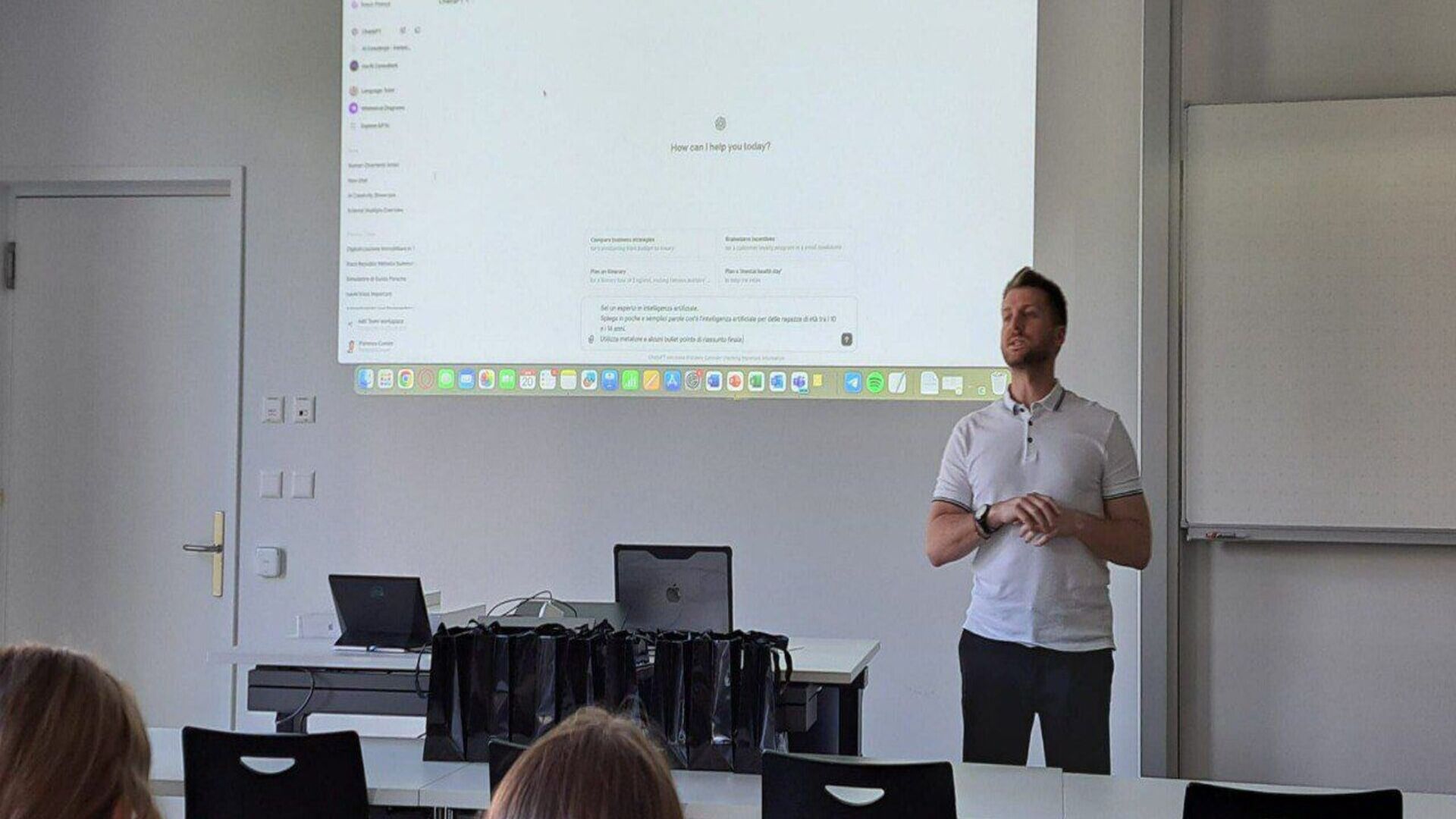The illusion of control breeds decision monsters
The illusion of control breeds decision monsters
[The sequel to “Baking yeast in the kitchen and Industry 4.0" and of "Sex, Lies and Decision Models for Business"]
[Due to its explicit erotic-culinary content, this post is forbidden to minors under 18 and is classified XXX Rated. Not recommended for minors]
Certain hashtags stick with you. Needless to say: they are studied perfectly. One of them is “#foodporn”. It is the one that best describes the food-sex relationship and demonstrates the addiction to what we like best. I won't bore you here with disquisitions and mental lucubrations and, if you want to go deeper, you can choose the kind of book that best suits you from psychology to cooking, the subject is so vast: a good search between Dr Search and Prof. Social and you have solved .
I, on the other hand, decided to use the hashtag for that relationship between posts on kitchen It is on sex and the entrepreneur's decisions, management models and metrics systems. As usual here it gets pretty hard go to core of the problem: as they say, it is a "hardcore" problem.
Locarno Film Festival: with Maja Hoffmann innovation is in power
Size matters3
In both the kitchen and the sex industry, size matters. Oh, but they matter everywhere, even in enterprise and management models, including what we call “scalability” and “replicability”.
In fact, the chef in the kitchen carries out a continuous work of innovation through the creation of new recipes with usual ingredients or the reinterpretation of old ones in a modern key, through a process of continuous improvement, knowing well which reactions on the palate and which culinary synaesthesias he intends to arouse. The goal is to (re)evoke, through flavors and smells, memories by providing a unique experience, unrepeatable elsewhere if not in your restaurant. The tests follow one another, the refinements too. It takes weeks, months, years to define the quantity of a single ingredient in relation to others and their variations, paying attention to the fact that the process changes its flavor following the chemical-physical transformation in the presence/absence of fire. To put it bluntly, this is about the dark science of culinary alchemy. The various attempts are annotated, experimented, controlled, monitored and certified, prototyped, then introduced and tested up to the final approval and then reproduced on a large scale, to the public. The most important aspects are the raw material, the process, the final product. In this process one of the important parts is the metrics.
Those who enjoy cooking have already understood: recipes are expressed in grams or in cups/spoons etc. How many grams is a cup equal to? And what cup are we talking about? What about coffee, tea, hot chocolate, or breakfast? For those who don't know how to make hard-boiled eggs, I admit that there is a convertibility table and, on some measuring cups, the two scales are shown. In baking, exact measurements are important: 180 degrees in the oven are two different things between the Celsius scale and the Fahreneit scale in making an American recipe. But then who requires us to use these metrics and not others invented by us? Are there any protocols? We are defining:
Davide Lugli: “We will let you know 'what's really there' online”
Proportions and doses
If the proportions and doses of the raw materials are defined, the process is standard, the hand mixer works, the product is ready and served, then the codified recipe therefore becomes "replicable" and protected by copyright (it is not a metaphor, the Court of the Italian Cassation intervened epically on this). “Scalable”? Perhaps. The production of ravioli and tortellini is scalable: done one, done all. The production of anchovy sauce is no longer scalable beyond certain limits, even for a range of time. There is a constraint on production before the market.
Now the classic case study easy easy: and if instead we apply all this in the sex industry? What changes? Is the product scalable, replicable? What is the metric, beyond the smiles that appear on your face? What needs to be improved technically? How much does the parallel hold?
Let's translate into the management model now. How important is the size of the company? Objection: an artisan enterprise is not a multinational enterprise, meaning by this both the dimensional character and the complex articulation into which the latter is divided. In reality, the management model is the same, it does not change, both being directed towards profit and the pursuit of this objective. The approach and articulation, therefore, are the same, only the level of complexity changes; the dynamics are the same and so are the metrics.
Parterre de roi at the young and innovative business forum
The confusion arises from here
As the level of complexity increases, it is assumed that the variables to keep under control increase exponentially because the underlying hypothesis is "I have to control everything in every single phase". This dynamic holds true regardless of the size of the company. Therefore, if I have to insert a metric system – ie one that measures what the company does for each phase – I have to insert it everywhere or the company is not in control and therefore loses money, it does not reach the goal. Thus we invest in management control systems, in databases that measure everything except what is needed, namely the "capacity to generate money". The large volume of data coupled with business complexity due to the inability to extract insights from the ocean of data generates needle-in-a-haystack syndrome. Lacking focus on the information needed to make decisions in an ocean of data, you end up making the wrong decision. The illusion of control breeds decision monsters. Kind of like turning over on the wrong side of the bed on a porn movie set or getting the cooking wrong or the doses of the ingredients for the recipe.
ArcheoVerso is the first ad hoc cultural project in virtuality
The sense of rhythm
Other case study easy easy: what if we get the timing wrong? You've gotten more serious now. Try to imagine what happens when you are in the two cases mentioned above. Something will even make you smile.
The dynamics, I said, remain the same and this saves us. If we look at them better, we also discover many interconnections, which lead us to reduce the variables. We need indicators that are exactly defined in relation to the goal we want to achieve. Thus we arrive at the Key Performance Indicators or KPIs. The definition of the same is the answer to the question for which we seek the information. These KPIs must have a standard, i.e. a unique metric that allows us to be able to replicate and scale them in a management model; pieces/hour or hours/man are two different metrics that impact decisions and costs even if the production process is unique and concerns ravioli or tortellini: the numerical representation changes. Therefore, any ill-defined indicator is worse than useless. What do you want to reduce/increase? What do you want to cut? The wrong decision drives the customer away.
At that moment the sinister figure of the consultant appears who wants to act as director in both cases, imposing a management model known only by him and with undoubted results as imposed from above. But would you accept that someone tells you things you already know – you are the entrepreneurs and you know the model, it makes you unique or the market would have cut you off – or do you prefer those who question your certainty that what you do cannot be changed and better capitalize on your knowledge? In other words: how well do you know the evolution of your business and how obsolete is it?
Well, this is the paradigm of your decisions. Whether you are a chef or a porn actor, your performances are up to you. The model of knowledge and approach to decisions only from your mindset. Isn't it time to question that?
The saga is over. The orgy of the senses and its empire too.
You may also be interested in:
Innosuisse has achieved its 2023 innovation goals in Switzerland
A record amount of over 490 million francs has been allocated to compensate for the lack of association with the EU's well-known Horizon Europe program
by Editorial staff Innovando.NewsEditorial staff of Innovando.News
“I'm selling, but I'm staying”: the new trend of the small entrepreneur
The story of Francesco Schittini and Emotec's entry into the MCP fund is exemplary of frequent changes of ownership without organizational shocks
by Alberto NicoliniEditor of districtbiomedicale.it, BioMed News and Radio Pico
AI Tools for Businesses, the course dedicated to artificial intelligence
The Swiss start-up navAI developed it with the aim of providing all the tools necessary to implement the new technology in its sector
There was a backdoor to infect them all, but one genius saved the web
Here's how the expertise of a developer, and a little... providence, just prevented the sabotage of Linux and the entire Internet




